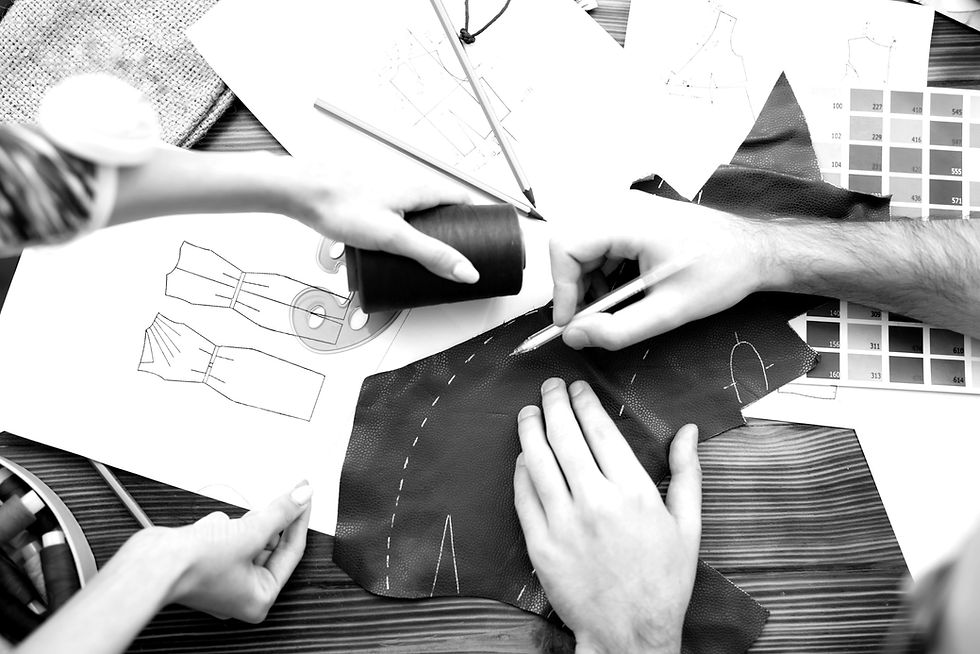- Michelle Ramsay - The Fashion Expert®

- Dec 17, 2019
- 3 min read
Launching a fashion brand is not a quick process and many startups enter into this with rose-tinted spectacles, only to be met with the minefield that is the Fashion Industry.

Common complaints include the fact that everything seems to take twice as long as you’d thought! Combine that with a 9-5 day job, family commitments and a social life and suddenly what you‘d naively expected to be a 6-month job, rolls into a year or perhaps 18 months to launch your collection.
So how do you keep going? How do you stay resilient and full of motivation when things seem tough?
I Believe It All Lies In Reflection.

A technique I use with my clients as part of my goal setting and planning workshop is to review the previous year, quarter and month to reflect on what has gone before. Taking stock of how far you’ve come, what you’ve achieved so far and where you are still to venture really puts things into perspective.
Being an entrepreneur and running your own business is so very different from being employed. In your average 9-5, you’ll often have a manager, supervisor or boss who will hopefully give you a level of praise or recognition for a job well done. Some achievements might even be rewarded with a bonus or salary review.
As entrepreneurs, we all too often hit those achievements but immediately move on to the next goal. Our happiness and sense of pride is invariably short-lived and pales over the coming days and weeks. Perhaps that business goal is now being implemented in the day to day running, so whilst we are actually living it constantly, the accomplishment can often be absorbed into the background.
Our to-do list is never going to be done, so what’s left is a continuous cycle of striving to the next goal and an ongoing road of things that are yet to be accomplished.
Taking stock to recognise how far you’ve come is what will keep you sane - trust me!
It's tough to remain positive if you come up against knockbacks. If you've had demands from other areas in your life and have neglected your business for a while. It can sometimes feel like it's taking an age to move forward at all.
But if you look back at where you were 6 months ago or a year you suddenly realise how far you've come already.
When was the last time you sat back for ten minutes and gave yourself the credit you deserve for getting to the stage you're at today? Just because you might not be at that launch stage yet doesn’t mean you’re not headed in the right direction.

Getting rid of the hierarchy.
Why do we assume that some achievements or goals are better than others? During mentoring sessions, a common theme with my clients is to only consider the ‘big’ achievements as worth discussing.
The focus is always upon things like sampling or production but little thought is given to what went prior to this stage. The research, the ideas, the inspiration, the design and perfecting this with a designer. Business admin such as registering your company, choosing a name, creating a logo securing a domain name and social media accounts seem trivial to some but they are certainly not. And let's not forget the decision to be your own boss, to start up something unique, to chase that entrepreneurial spirit inside.
Those baby steps you take each day, each week, each month, soon start paving the way for greater things. The cumulative effect they have should not be ignored, for those longer-term goals could never be achieved without the small stuff.
Do something for yourself today.

Set aside some time away from your phone, desk and computer. Allow yourself 30 minutes with a pen and paper and start brainstorming what you've achieved this last year. Don't overthink things, and don't try to put things in any order, just jot down what comes to mind. Remember to sideline that hierarchy and write down things that were both easy and hard to achieve.
And then take some time to review that list, bask in it's glory and remind yourself that you are moving forward.
Sometimes it may not be as fast as you'd like but nothing worthwhile is ever easy!
I'd love to know how you get on with this exercise and if you find this useful.
If you have any questions, comments or feel you need help launching your fashion brand then get in touch and we can discuss your requirements - info@thefashionexpert.co.uk
Michelle Ramsay - The Fashion Expert®
#freelance #fashiondesigner #thefashionexpert #thefashionexpertuk #michelleramsaydesign #fashionbusiness #fashionconsultant #fashiondesign #startupfashion #thatsfashiondarling #startupconsultant #fashionpreneur #fashionstartup #startupspecialist #launchyourbrand #clothingline #fashionmentor #businessoffashion #fashionbusinesscoach #techpackdesigner #fashioncads #techpacks #businessadvice #emergingfashion #sustainablefashion #startafashionbrand #launchaclothingline









